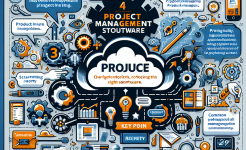Cross-functional Collaboration
Cross-functional collaboration is the cornerstone of a successful IPD process. In traditional R&D setups, departments often operate in silos, leading to miscommunications, delays, and suboptimal product outcomes. In an IPD environment, representatives from various functions such as marketing, engineering, manufacturing, and finance work together from the very beginning of a project. This early involvement allows for a holistic understanding of the product requirements. Marketing teams can provide insights into customer needs and market trends, while engineering teams can offer technical feasibility perspectives. Manufacturing representatives can ensure that the product design is manufacturable, and finance teams can manage the budget effectively.
Moreover, cross-functional collaboration breaks down the barriers between departments, fostering a culture of teamwork and shared goals. When everyone is on the same page, decisions can be made more quickly, and potential issues can be identified and resolved in a timely manner. For example, if a marketing team identifies a new feature that customers are demanding, the engineering team can immediately assess its technical viability, and the manufacturing team can start planning for its production. This seamless flow of information and cooperation can lead to products that not only meet but exceed customer expectations.
Furthermore, cross-functional teams can bring diverse perspectives and expertise to the table. Different departments have unique ways of thinking and problem-solving. By combining these perspectives, the team can come up with innovative solutions that might not have been possible otherwise. For instance, a finance expert might suggest cost-saving measures that do not compromise the product's quality, while a manufacturing engineer could propose design changes that improve production efficiency. This synergy of ideas can result in a more competitive and successful product.
Clear Product Strategy
A clear product strategy is essential for guiding the IPD process. It defines the product's purpose, target market, and competitive positioning. Without a well-defined strategy, R&D efforts can become unfocused, leading to wasted resources and missed opportunities. A product strategy should align with the company's overall business goals. For example, if a company aims to be a leader in sustainable technology, its product strategy should incorporate environmentally friendly features and manufacturing processes.
A clear product strategy also helps in setting priorities. It determines which features are essential for the product to succeed in the market and which can be deferred or eliminated. This allows the R&D team to focus their efforts on the most critical aspects of the product. For instance, if the target market values speed and simplicity, the product strategy should prioritize features that enhance these aspects, such as a faster processing speed or an intuitive user interface.
In addition, a product strategy provides a roadmap for the product's development and evolution. It outlines the product's launch plan, as well as its future enhancements and upgrades. This long-term vision helps in coordinating the efforts of different teams involved in the IPD process. For example, the marketing team can plan their promotional activities based on the product's launch schedule, while the R&D team can work on future product features in a sequential and organized manner.
Effective Project Management
Effective project management is crucial for ensuring that the IPD process stays on track. It involves setting clear goals, defining project scope, creating a detailed project plan, and monitoring progress. A well-defined project plan outlines the tasks, timelines, and responsibilities of each team member. This clarity helps in avoiding confusion and duplication of efforts. For example, if a project plan clearly states that the engineering team has a specific deadline for completing the product's prototype, it becomes easier to hold them accountable.

Project managers also play a key role in risk management. They identify potential risks and develop contingency plans to mitigate them. For instance, if there is a risk of a shortage of raw materials, the project manager can work with the procurement team to find alternative suppliers or adjust the production schedule. By proactively managing risks, the project can stay on course even in the face of unexpected challenges.
Moreover, effective project management involves regular communication and reporting. Project managers need to keep all stakeholders informed about the project's progress, issues, and any changes to the plan. This transparency helps in building trust and ensuring that everyone is working towards the same goals. For example, a weekly project status report can provide updates on the project's milestones, budget utilization, and any potential roadblocks.
Robust Market and Customer Insights
Understanding the market and customer needs is fundamental to the success of the IPD process. Market research helps in identifying market trends, competitive landscape, and customer preferences. By staying abreast of market trends, companies can anticipate changes in customer demands and develop products that are relevant and competitive. For example, if market research indicates a growing trend towards mobile payment solutions, a company can invest in developing innovative mobile payment products.
Customer insights are equally important. By engaging with customers directly, companies can gain a deep understanding of their pain points, needs, and expectations. This information can be used to shape the product's features and design. For instance, if customers complain about the complexity of a product's user interface, the R&D team can focus on simplifying it.
In addition, gathering market and customer insights should be an ongoing process. Customer needs and market dynamics can change rapidly, and companies need to be able to adapt quickly. By continuously monitoring the market and engaging with customers, companies can make timely adjustments to their product strategy and development plans. This agility can give them a competitive edge in the market.
Continuous Improvement
The IPD process is not a one-time event but an ongoing journey of improvement. Companies should regularly review and evaluate their IPD processes to identify areas for enhancement. This can involve analyzing past projects to understand what worked well and what could have been done better. For example, if a project faced delays due to a lack of communication between teams, the company can implement better communication channels and protocols.
Continuous improvement also involves staying updated with the latest industry best practices and technologies. By adopting new methodologies and tools, companies can enhance the efficiency and effectiveness of their IPD processes. For instance, the use of agile development methodologies can enable faster product development cycles and more flexibility in responding to changing requirements.
Moreover, creating a culture of continuous improvement within the organization is essential. Employees should be encouraged to share ideas and suggestions for improving the IPD process. This can lead to a more innovative and collaborative work environment, where everyone is focused on delivering better products and services.
In conclusion, the success of the R&D IPD process depends on several key factors. Cross-functional collaboration breaks down departmental silos, enabling seamless cooperation and the integration of diverse perspectives. A clear product strategy provides direction and focus, ensuring that the product aligns with the company's goals and meets market needs. Effective project management keeps the process on track, manages risks, and ensures transparency. Robust market and customer insights help in developing products that are relevant and competitive. Finally, continuous improvement ensures that the IPD process evolves and adapts to changing circumstances. By paying attention to these five key success factors, companies can enhance their R&D capabilities, develop innovative products, and gain a competitive advantage in the market. This will not only drive business growth but also enable them to stay ahead in an increasingly dynamic and competitive business environment. As the market continues to evolve, companies that master these factors will be better positioned to thrive and succeed in the long run.
ARTICLE TITLE :Analysis of 5 key success factors in the R&D IPD process ,AUTHOR :ITpmlib

















